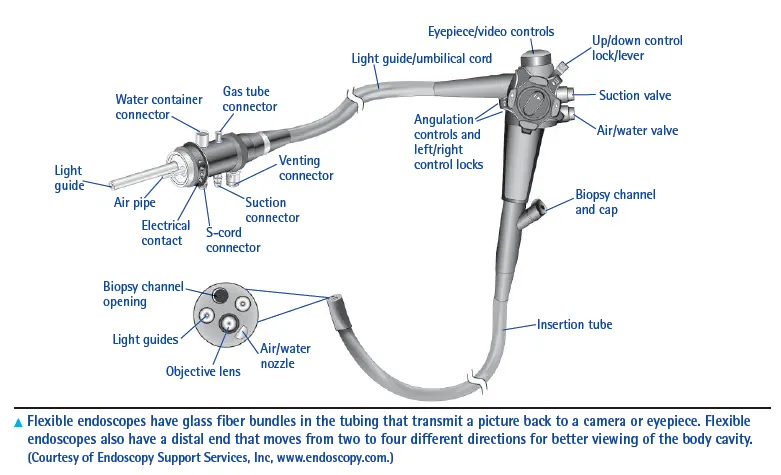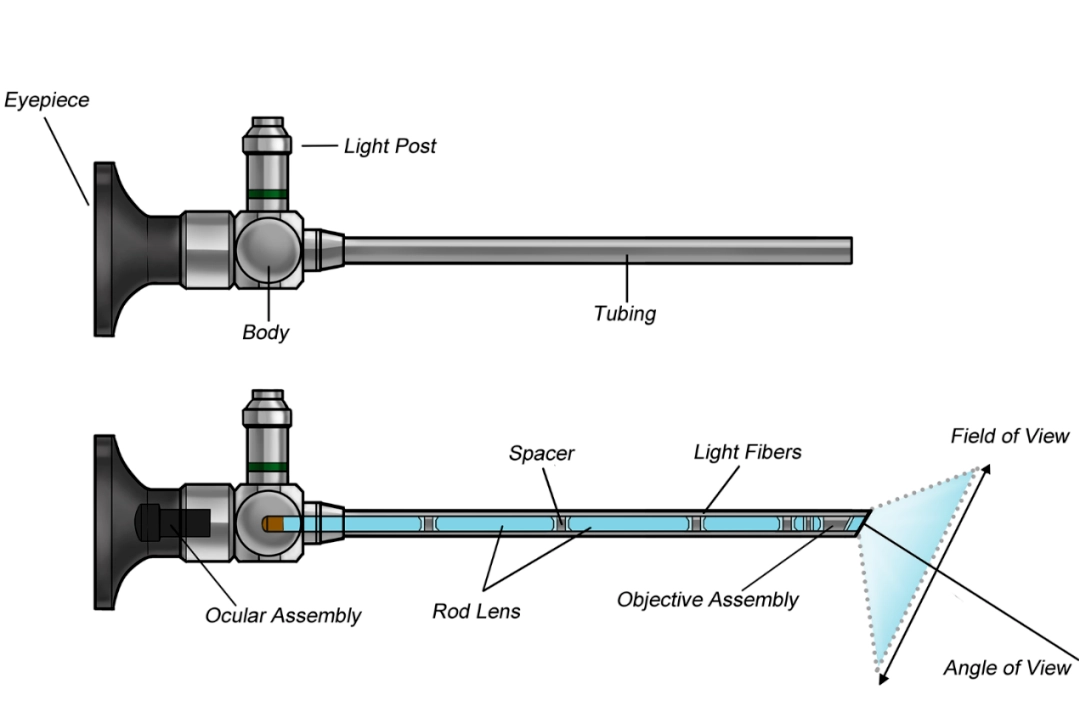Endoscope systems, which consist of multiple components such as optical lenses, image sensors, light sources, and mechanical devices, can generally be divided into medical endoscopes and industrial endoscopes. Medical endoscopes can enter the human body through natural orifices or surgical incisions to observe internal imaging results. They can reveal lesions that X-rays cannot show, making them extremely important in the medical field. Common medical endoscopes include gastroscopes, colonoscopes, hysteroscopes, and neuroendoscopes. Industrial endoscopes are typically used in non-destructive testing and borehole inspection technologies. They can be categorized into rigid industrial endoscopes, flexible small-diameter endoscopes, and video industrial endoscopes, and they have wide applications in automotive repair, security, and inspection fields.
Different types of endoscopes have some functional and structural differences. Below is a diagram of a common flexible endoscope used for gastrointestinal examinations. Its main structure includes an insertion tube, an eyepiece/video converter, and a light guide tube. The optical objective lens is contained within one of the channels of the insertion tube.

The following diagram shows the internal structure of the insertion tube, specifically a rigid tube (the internal structures of rigid and flexible tubes are generally similar). The structure inside the tube includes rod lenses, spacers, an objective assembly, and light fibers located at the top. This article will discuss the model located at the distal end of the endoscope’s insertion tube, which is the objective lens part.

Bena Optics offers comprehensive services for endoscope systems, including design, substrate processing, assembly, and debugging.